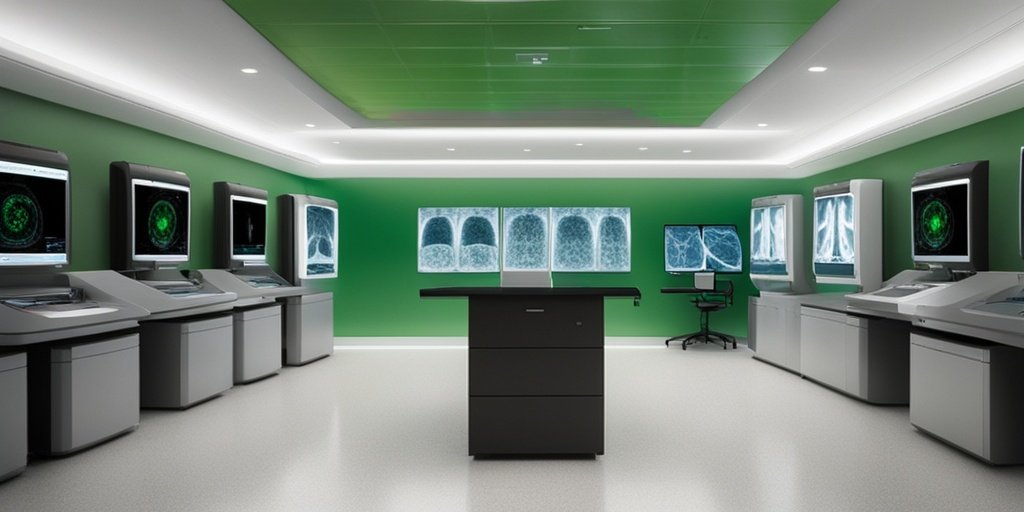⚡ Quick Summary
This study evaluates the use of TotalSegmentator for facial feature removal in head CT scans, addressing privacy concerns associated with facial recognition technology. The findings indicate that while defacing images reduces re-identification risks, the TotalSegmentator offers slightly better privacy protection compared to traditional methods.
🔍 Key Details
- 📊 Dataset: 1,404 high-quality head CT scan renderings from the UCLH EIT Stroke dataset
- ⚙️ Technology: TotalSegmentator and a state-of-the-art CT defacing algorithm
- 🧠 Methodology: Deep learning models for face detection and Support Vector Machine for performance assessment
- 🏆 Performance Metrics: ROC-AUC and accuracy for defaced vs. non-defaced images
🔑 Key Takeaways
- 🔍 Facial recognition technology poses significant privacy risks in medical imaging.
- 🛡️ TotalSegmentator effectively reduces re-identification risks while maintaining data integrity.
- 📉 Performance metrics showed a decline in accuracy post-defacing, with TotalSegmentator achieving a ROC-AUC of 0.55.
- 🤖 Deep learning models were utilized for accurate face detection in CT scans.
- 📈 The study highlights the importance of privacy-preserving techniques in multi-site research.
- 💻 Code availability for implementing the proposed defacing pipeline is provided.
- 🏥 Implications for practice include compliance with medico-legal requirements for facial feature removal.

📚 Background
The integration of facial recognition technology in medical imaging has raised concerns regarding patient privacy, particularly in head CT scans where identifiable features can be easily recognized. As healthcare increasingly relies on data sharing for research, it becomes crucial to develop methods that protect patient identities while preserving the integrity of the data.
🗒️ Study
This study analyzed 1,404 head CT scan renderings from the UCLH EIT Stroke dataset, comparing the effectiveness of the TotalSegmentator against a leading CT defacing algorithm. The researchers employed deep learning models for face detection and trained a Support Vector Machine to evaluate the performance of the defacing methods through cosine similarity metrics.
📈 Results
The results indicated that faces were detected in 76.5% of non-defaced images. The median cosine similarity for intra-patient images was 0.65, while inter-patient images showed a lower median of 0.50. Following defacing, the TotalSegmentator’s performance metrics dropped to a ROC-AUC of 0.55 and an accuracy of 0.56, demonstrating its effectiveness in reducing re-identification risks.
🌍 Impact and Implications
The findings from this study underscore the importance of utilizing advanced defacing algorithms like TotalSegmentator in medical imaging. By effectively removing facial features, researchers can facilitate multi-site research and data sharing while adhering to privacy regulations. This technology serves as a valuable tool for radiographers and radiologists, ensuring compliance with medico-legal requirements.
🔮 Conclusion
The study highlights the critical role of privacy-preserving technologies in medical imaging. The TotalSegmentator not only mitigates re-identification risks but also supports the ongoing need for data integrity in research. As healthcare continues to evolve, embracing such innovations will be essential for protecting patient privacy while advancing medical knowledge.
💬 Your comments
What are your thoughts on the use of defacing algorithms in medical imaging? We would love to hear your insights! 💬 Share your comments below or connect with us on social media:
Analyzing the TotalSegmentator for facial feature removal in head CT scans.
Abstract
BACKGROUND: Facial recognition technology in medical imaging, particularly with head scans, poses privacy risks due to identifiable facial features. This study evaluates the use of facial recognition software in identifying facial features from head CT scans and explores a defacing pipeline using TotalSegmentator to reduce re-identification risks while preserving data integrity for research.
METHODS: 1404 high-quality renderings from the UCLH EIT Stroke dataset, both with and without defacing were analysed. The performance of defacing with the face mask created by TotalSegmentator was compared to a state-of-the-art CT defacing algorithm. Face detection was performed using deep learning models. The cosine similarity between facial embeddings for intra- and inter-patient images was compared. A Support Vector Machine was trained on cosine similarity values to assess defacing performance, determining if two renderings came from the same patient. This analysis was conducted on defaced and non-defaced images using 5-fold cross-validation.
RESULTS: Faces were detected in 76.5 % of non-defaced images. Intra-patient images exhibited a median cosine similarity of 0.65 (IQR: 0.47-0.80), compared to 0.50 (IQR: 0.39-0.62) for inter-patient images. A binary classifier performed moderately on non-defaced images, achieving a ROC-AUC of 0.69 (SD = 0.01) and an accuracy of 0.65 (SD = 0.01) in distinguishing whether a scan belonged to the same or a different individual. Following defacing, performance declined markedly. Defacing with the TotalSegmentator decreased the ROC-AUC to 0.55 (SD = 0.02) and the accuracy to 0.56 (SD = 0.01), whereas the CTA-DEFACE algorithm brought the performance down to a ROC-AUC of 0.60 (SD = 0.02) and an accuracy of 0.59 (SD = 0.01). These results demonstrate the effectiveness of defacing algorithms in mitigating re-identification risks, with the TotalSegmentator providing slightly superior privacy protection.
CONCLUSION: Facial recognition software can identify facial features from partial and complete head CT scan renderings. However, using the TotalSegmentator to deface images reduces re-identification risks to a near-chance level. We offer code to implement this privacy-preserving pipeline.
IMPLICATIONS FOR PRACTICE: Utilizing the TotalSegmentator framework, the proposed pipeline efficiently removes facial features from CT images, making it ideal for multi-site research and data sharing. It is a useful tool for radiographers and radiologists who must comply with medico-legal requirements necessitating the removal of facial features.
Author: [‘Lindholz M’, ‘Ruppel R’, ‘Schulze-Weddige S’, ‘Baumgärtner GL’, ‘Schobert I’, ‘Panten A’, ‘Schmidt R’, ‘Auer TA’, ‘Nawabi J’, ‘Haack AM’, ‘Stepansky L’, ‘Poggi L’, ‘Hosch R’, ‘Hamm CA’, ‘Penzkofer T’]
Journal: Radiography (Lond)
Citation: Lindholz M, et al. Analyzing the TotalSegmentator for facial feature removal in head CT scans. Analyzing the TotalSegmentator for facial feature removal in head CT scans. 2025; 31:372-378. doi: 10.1016/j.radi.2024.12.018